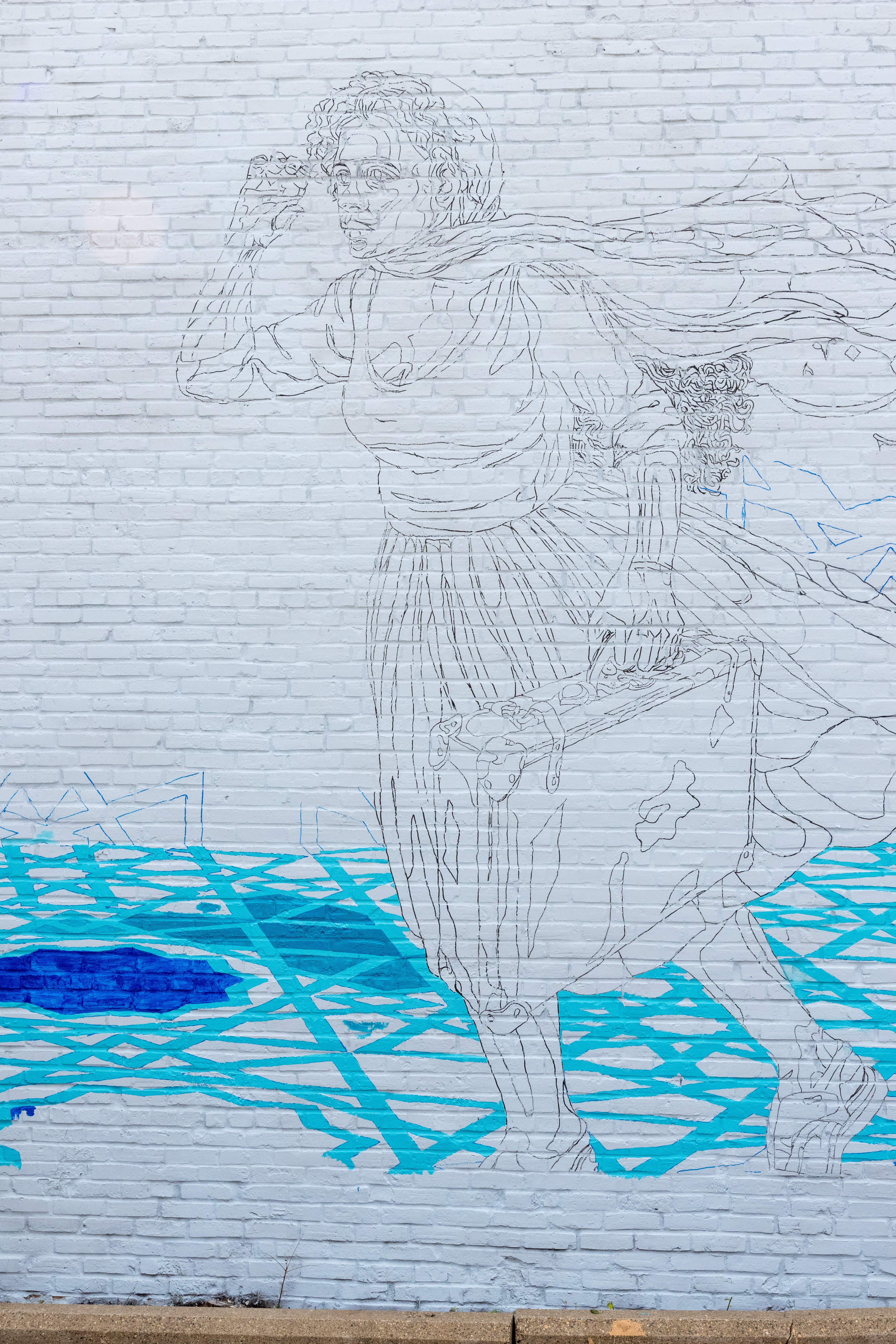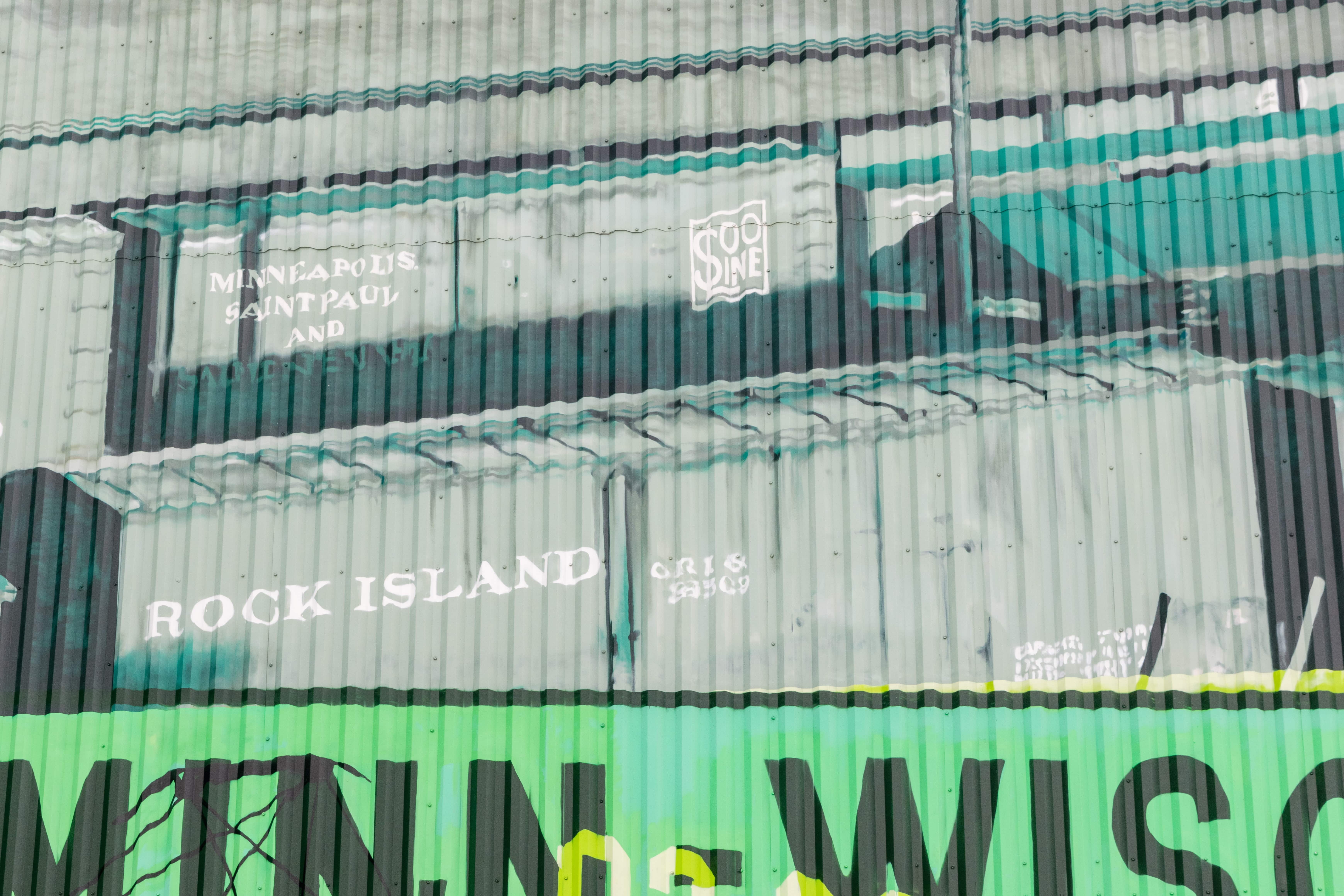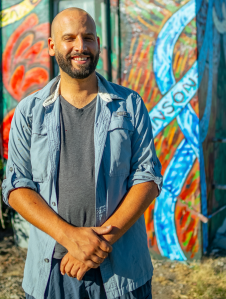July 20, 2023
Macalester-Groveland, Desnoyer Park, Saint Anthony Park
14 miles
Desnoyer Park
On this summer day, I journeyed to South Saint Anthony Park. I cut through Desnoyer Park, where I paused for a trailer unlike anything I’d seen, which at first glance resembled an upside-down boat. Turns out, this unconventional trailer is built to carry a glider!

South Saint Anthony Park: Changes Along the Western Border
There have been many changes since the early 2000s for the section of South Saint Anthony Park north of Interstate 94 and west of Highway 280. This area encompasses part of St. Paul’s western border.
Most recently, the last portion of the former Weyerhaeuser distribution center property, bounded by Emerald Street on the west, Franklin Avenue on the north, Berry Street to the east and Wabash Avenue on the south, was redeveloped.




Weyerhaeuser shuttered the facility, laid off 17 employees and sold the nearly 13-acre property to Dominium in 2016. The buildings were bulldozed and replaced in 2020 by affordable and market-rate apartment buildings.


The changes in the Westgate Commons Park neighborhood are indicative of the transformation in much of South Saint Anthony Park. The one-time industrial zone spawned more than a century ago by the railroads has been gradually transitioning toward residential through conversion of underutilized or shuttered manufacturing and warehouse properties, and new apartment and condominium construction.
The Chroma Zone

If you’ve passed through nearly any part of South Saint Anthony Park, you’ve noticed the explosion of colorful murals on buildings. The murals scattered throughout the Chroma Zone feature a mix of cultural influences, flowers, people, insects, animals, and patterns rendered in vibrant hues that brighten up even the greyest day. It would be easy to spend hours, if not days, poring over the nuances of these stunning works of art.
The organization behind the Chroma Zone murals is the nonprofit Creative Enterprise Zone (CEZ). According to its website, the CEZ is a district of the city “and a nonprofit organization dedicated to attracting and supporting creative people and businesses.”
Since 2019, the CEZ has sponsored mural painting through individual commissions and an art festival. More than 70 kaleidoscopic murals have been crafted between the Chroma Zone’s inception and 2023. The varied oversized compositions invigorate the South Saint Anthony streetscape.
A Mural Takes Shape
Hend Al-Mansour was in the early stages of painting her mural on the east wall of the Minneapolis-St. Paul Building when we met. The canvas on which she was creating Coming Home was a brick wall 60 feet wide by 20 feet tall.
Though she was creating a mural, Hend stated she’s not really a muralist. “I’m a visual artist. I do installations. I do mostly screen printing and painting. And recently I’m doing animation.” Only her second large mural, Hend is fond of the breadth of the unusual canvas. “I like painting big but I felt like there are a lot of obstacles. It’s challenging.”

One challenge for Hend—at least for a day—was reaching some 15 to 20 feet up the wall while standing on a too-short ladder so she could draw outlines of objects in the mural. “Last night I had to tape my marker on a stick. To do that, I stretched my body and it was painful,” Hend said, laughing at the recollection. Fortunately, Chroma Zone staff finagled a lift for Hend to use for the rest of her time there.

The magnitude of the mural led Hend to create a small-scale drawing of Coming Home on paper. Then she used a projector to properly size and cast the image onto the wall. “I come when there is a little light to set it [the projector] up. By the time I finish setting it up, it’s night and then I start projecting and I have a marker and I go just trace my image.” Hend figured she’d need six or seven evenings to trace the entire mural onto the brick wall. Then painting would begin in earnest.

Painting Coming Home was a rare occasion for Hend to work in public, which she admitted makes her nervous. “I don’t like the public nature of it. I don’t like it when people watch me when I do.” Then, she backtracked slightly. “I like it because it’s a good advertisement.”
Hend’s preference? “I like to paint privately in my studio and then the end results show to the public.”
“It’s like a performance, actually. And I’m not a performer.”
Hend Al-Mansour on painting murals in public
CEZ Executive Director Angela Casselton said Hend is far from the only artist who finds it uncomfortable to have spectators watch her work. “Creating art so publicly, at such a large scale, is challenging for many of the artists. It’s very gratifying to be able to support artists that do their work so publicly. I mean, it’s one thing to go to your studio, shut the door, and create, but to throw it out there, there’s so much bravery.”

Hend explained that Coming Home is a comment on the anxiety and concern immigration frequently causes. The mural features an American woman and a woman immigrating from the Middle East who are looking at each other through a telescope. The background behind each woman is a quilt pattern reflecting their heritage—a log cabin quilt pattern is behind the American woman and an Islamic geometric design surrounds the Middle Eastern woman.

Elsewhere Around the Chroma Zone
Chroma Zone mural artists are granted creative independence and are paid, according to Angela. “That’s a contingency of any mural when we approach a building owner. We say, ‘We’re going to pick the artist, the artist is going to pick the content, but we’re going to also pick up the tab.’ So we have a strict all artists get paid policy.”
Angela has knocked on many doors throughout the CEZ to get permission to use buildings for canvases. “It’s actually been really an important part of our evolution as an organization because we didn’t realize just who all owned what buildings in this neighborhood or what all many of these buildings housed. So by doing a lot of cold calling, leveraging a lot of relationships to get introductions, we are learning more about who is here.”
Angela knows a story about nearly every mural that’s graced a wall in the Chroma Zone. For instance, there’s the enormous painting on Lincoln Distributing at 727 Vandalia Street that went up in 2020.

Artist Wes Winship’s initial idea for the mural was more abstract than the building owners wanted. With some back-and-forth between Wes and company officials, facilitated by Angela, they agreed on a mural that reflected the area’s past. “Wes is a wonderful historian and did careful research and was able to come up with that. Hence the Cray computers and the rail lines and stuff like that.”
Added Angela, “He’s just very experienced and he’s not afraid of corrugated metal. I can tell you not every artist wants corrugated metal.”

The story of the three murals on the Pro Stop Fuel Station at Cleveland and Wabash shows how Angela’s persistence pays off. In 2019 she spotted the gas station’s deteriorating walls and peeling paint. She contacted the owner and told him about the about the Chroma Zone Mural and Art Festival. “’We pay for the murals. We pay the artists. It’s a no cost to you. I see your walls are in bad shape, but if you ever repair them, we could have a conversation.’”
When driving past the Pro Stop in 2020, Angela noticed the walls being repaired, “So I called him up and I said, ‘Hey, can we put a mural here?’ And he let us put a mural there. And then we did two out of the four walls and he called us back and said, ‘Why don’t you do the third one?’”
Artist Aaron Johnson-Ortiz conceived and painted La Cigarra (The Cicada) on two sides of the station in 2021. The mural represents resurgence and Johnson-Ortiz’s feelings about spring, and normalcy returning after COVID.

A year later, in 2022, Jennifer Davis put up the mural Bird Friend on the north-facing wall for the Chroma Zone Mural and Art Festival.


The diverse style, subjects and background of the muralists and their works has led to powerful moments. Angela recalled an emotional interaction at the 2023 mural festival. “When Philipo Dyauli was doing his mural on Territorial [Road], I got to witness a man come up and say, ‘Thank you for letting me see myself on your wall. There’s not a lot of places where I see me,’ The artist took it in stride, but I get very teary.”
“I get very infatuated. You could stand me in front of any mural, and I will tell you a story that has deep meaning to me.”
Angela Casselton, on her favorite Chroma Zone mural
The Creative Enterprise Zone, said Angela, used the Northeast Minneapolis Arts District as a guide but expanded upon it. “We took a broader view of creative, meaning it could be restaurants, could be breweries, could be small creative agencies, could be artists, just to really support the idea that creativity has values and value in our lives.”
“As we attract more like-minded creative businesses here,” she added, “we are also attracting more of our muralists. So at least five have studios here.”

The tireless Angela is a staff of one, though periodically she has an AmeriCorps member to help. Angela puts in an extraordinary amount of foot work recruiting building owners willing to offer walls for muralists to paint upon. “I do a lot of cold calling, or I stop by, or I knock on a door.”
The Murals Are Not Forever
The murals, according to Angela, will grace the walls of the CEZ for a limited number of years. “Murals are not meant to not be terribly permanent, which breaks my heart.
“Only nature knows how long. Depending on where the mural is located, what kind of surfaces it’s on, how it was adhered, there’s lots of factors, whether it’s been coated or not coated, I hope we can get a good solid 10 years out of every mural.”
The murals draw art-lovers and the curious to the CEZ and its businesses, Angela said. “It really gives energy and vibrancy to the neighborhood. We’ve raised the visibility of the Zone and raised visibility for the work we do and for our creative partners.”
Angela relishes seeing people wandering around viewing the murals. “There’s nothing that gives me more joy than walking around the neighborhood and seeing clusters of people carrying maps.”
Despite lavish praise and plentiful visitors, the long-term future of the Chroma Zone Mural and Art Festival is uncertain after 2024, Angela said. “We have always kept the festival fairly humble with most of our funding going towards artist fees and materials. But for us as an organization to continue to sustain it also has to be a model that supports our work.”
The CEZ’s Other Work
Aside from the mural festival, the CEZ has launched other enhancements to the neighborhood. One is the 100 Trees Initiative, which Angela explained, “plants trees on the urban street boulevards, which are normally very inhospitable. We need more trees to offset the high heat index from being mostly industrial; lots of asphalt, lots of flat roofs.”
Another effort involves the for-profit Taproot Investment Cooperative, which grew out of the CEZ Real Estate Committee and shared values about community investment. Taproot is a Real Estate Investment Cooperative (REIC) that allows individuals and tenants to invest in real estate for the benefit of their community. (Streets.mn contributor Pat Thompson also wrote about REICs, and Taproot, for her article, A Primer on Community Ownership.) The CEZ was involved with launching the co-op and getting funds for many of its start-up costs, Angela said. “We really want to promote more local ownership. We know our creative community is best protected by people who are concerned about the success of their business.”
She added, “We want creative people to be successful. They add a lot of value and beauty and understanding of our everyday lives through their artistry or their creation.”
Through local investment, Taproot hopes to prevent small businesses from displacement and keep the commercial and industrial space affordable for creators.
The CEZ and Taproot aren’t opposed to residential growth in the Zone. Rather, members want to balance development to limit gentrification. “It’s great to have that influx of residents,” Angela said. “We think more people on the street will create more of a sense of community, increase the safety and the overall visibility and walkability of the neighborhood.”
The nonprofit Creative Enterprise Zone is a tax-exempt, 501c3 organization. Volunteers and tax deductible donations are welcome and appreciated.
One Final Stop

Montgomery Street is akin to the larger CEZ prior to when artists and other creative types moved in and murals decorated many walls. It’s the center of an underused industrial tract in South Saint Anthony Park, about four blocks square. Plans for redevelopment of the area periodically bubble up to varying degrees of resistance. In 2018, the most recent plan to rehabilitate the decaying former Superior Packing Company building into apartments was scuttled.



It’s anyone’s guess what will become of the Superior Packing Company building. Perhaps someone will convert it to working (or living) space for creatives. Maybe it will be returned to industrial use. Or it’s possible the building will be leveled and the land left fallow for some future development.
Editor’s notes:
This article is reprinted from Wolfie Browender’s blog, Saint Paul by Bike: Every Block of Every Street. All photos by the author unless otherwise noted.
For another visual journey through the Chroma Zone with a focus on Indigenous art and history, see this Streets.mn article by James Wilkinson.
























